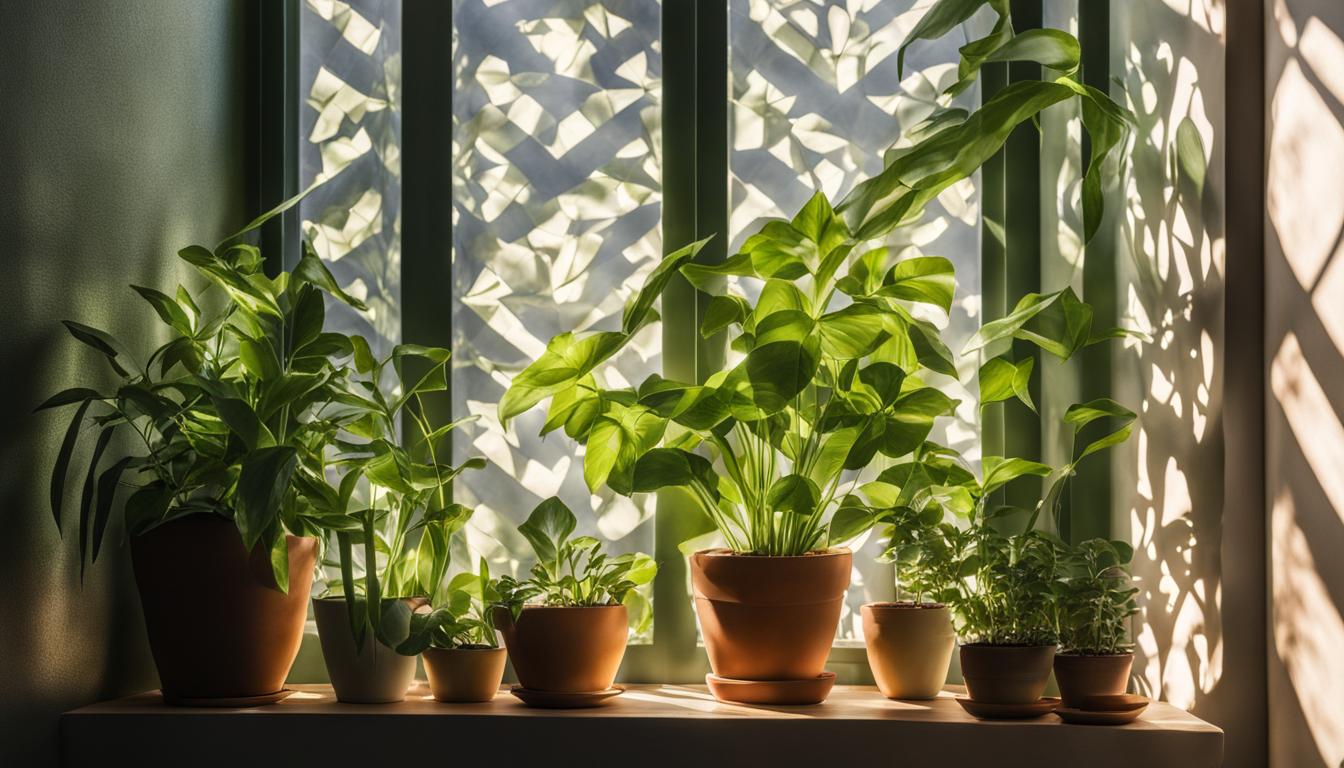Indoor plants add beauty and life to any home, but caring for them requires some basic knowledge. In this beginner’s guide to indoor plant care, we will explore the essential aspects of keeping your plants healthy and thriving. We will cover topics such as light, water, and air requirements, choosing the right plants for your home, selecting appropriate pots, understanding the importance of proper watering and fertilizing, and troubleshooting common plant care issues. Whether you are new to indoor gardening or looking to enhance your plant care skills, this guide will provide you with the information you need to keep your indoor plants thriving all year round.
Key Takeaways:
- Indoor plants require proper care to thrive in your home.
- Understanding the light needs of your indoor plants is essential for their growth and health.
- Providing adequate watering is crucial to prevent overwatering or underwatering.
- Choosing the right pots with drainage holes helps in maintaining healthy plant roots.
- Regular fertilizing and cleaning of indoor plants promote their overall health and vitality.
Understanding the Light Needs of Indoor Plants
Light exposure plays a vital role in the growth and well-being of indoor plants. Different plants have varying light requirements, so it’s essential to understand their individual needs. Some plants thrive in bright, direct sunlight, while others prefer partial sunlight or even low light conditions. By considering the placement of your plants in relation to windows and natural light sources in your home, you can ensure they receive the optimal amount of light for their growth.
While sunlight is crucial for plant growth, it’s important to note that direct, intense sunlight can actually harm most houseplants. To prevent sunburn and damage, it’s advisable to provide your plants with filtered or indirect light. You can achieve this by placing them a few feet away from windows or using sheer curtains to diffuse the light. During the winter months when natural light may be limited, you may need to consider supplementing your plants’ light requirements with artificial options such as grow lights.
It’s also important to rotate your plants regularly if they are placed next to a wall or window. This ensures that all sides of the plant receive equal light exposure, preventing lopsided growth. By understanding and meeting the light needs of your indoor plants, you can promote healthy growth and vibrant foliage year-round.
Providing Adequate Watering for Indoor Plants
Proper watering is essential for the health and well-being of indoor plants. Finding the right balance between overwatering and underwatering is key. Overwatering can lead to root rot and the eventual demise of the plant, while underwatering can cause wilting and droopy leaves. To ensure optimal watering, consider factors such as the type of plant, pot size, and environmental conditions.
It’s important to choose pots with drainage holes to avoid waterlogging. This allows excess water to escape and prevents the plant’s roots from sitting in stagnant water. Monitoring soil moisture levels is crucial in determining when to water. Stick your finger about an inch into the soil; if it feels dry, it’s time to water. However, if it’s still moist, hold off on watering to prevent overwatering.
Watering Frequency
The frequency of watering depends on several factors, including the plant’s water requirements, the season, and the temperature. Generally, indoor plants require less frequent watering during the winter months when they enter a resting period. It’s always better to underwater than overwater, as most indoor plants can tolerate slight drought conditions. Let the soil dry out slightly between waterings to prevent moisture-related issues.
Winter Houseplant Care
During winter, when the air tends to be drier, it’s important to adjust your watering routine accordingly. Indoor plants may require less frequent watering due to the lower humidity levels. Be mindful of the amount of water you provide and avoid overwatering during this season.

Remember, each plant has its own specific watering needs, so it’s important to research and understand the requirements of your indoor plants to provide them with the right amount of water for optimal growth and health.
Selecting the Right Pots for Your Indoor Plants
Choosing the right pots for your indoor plants is an essential aspect of their care and growth. The type of pot you select can have a significant impact on the overall health and well-being of your plants. Here are some key factors to consider:
- Drainage Holes: When choosing pots, opt for ones that have drainage holes at the bottom. This is important as it allows excess water to escape, preventing waterlogging and root rot.
- Decorative Pots: If you prefer decorative pots without drainage holes, consider using an inner pot with drainage and place it inside the decorative one. This way, you can enjoy the aesthetics while ensuring proper drainage.
- Pot Size: Select a pot size that is appropriate for your plant’s root system. Pots that are too small can restrict root growth, while pots that are too large may retain too much moisture, leading to overwatering.
- Saucers: Using saucers or mat rounds under your pots can protect your floors and furniture from water damage. It also helps in catching excess water that drains out of the pots.
- Pot Material: Different pot materials, such as ceramics, terracotta, or plastic, have varying moisture retention properties. Choose pots that suit the specific needs of your plants.
- Succulent Pots and Tabletop Pots: If you have succulents, consider using specialized pots designed for their specific needs. Additionally, tabletop pots are a great option for smaller plants that can be placed on tables or shelves.
By considering these factors and selecting the right pots, you can provide a conducive environment for your indoor plants to thrive.
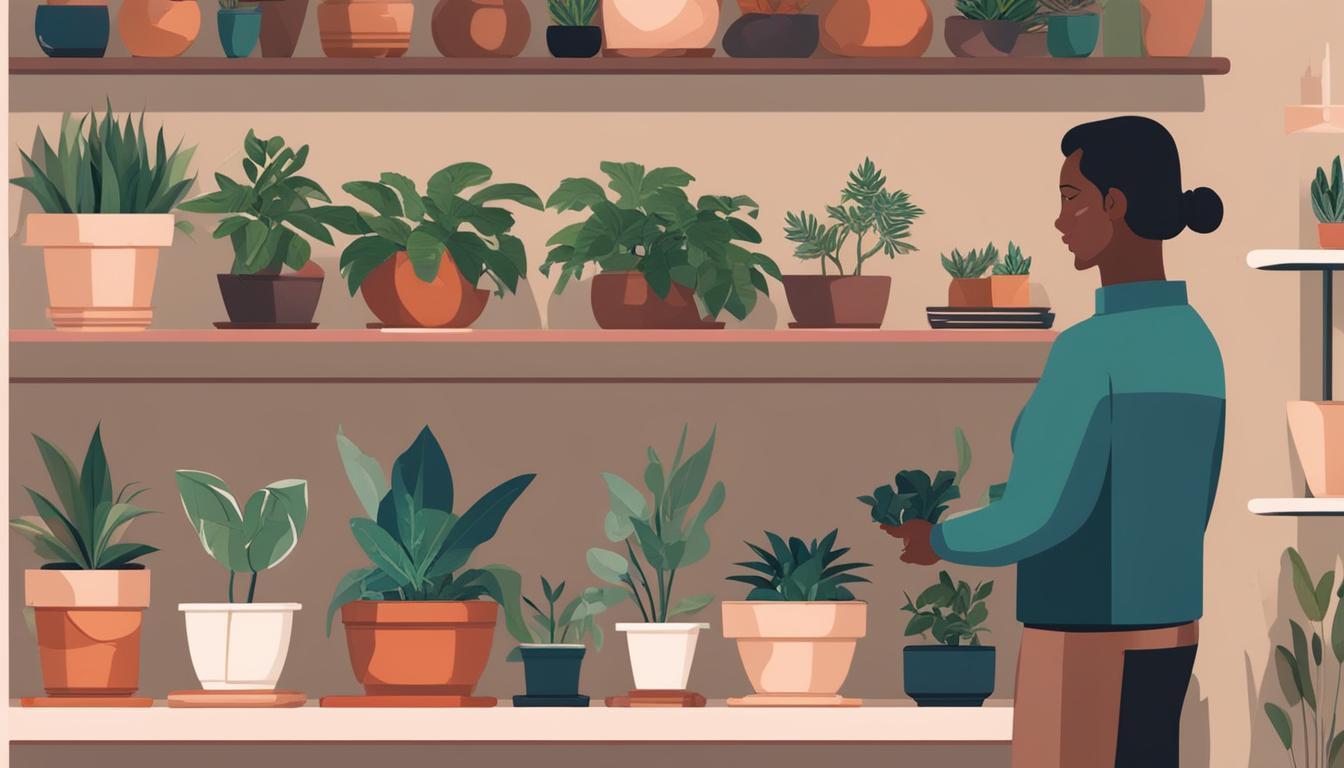
Note: The image above showcases a variety of pots suitable for different indoor plants.
Understanding the Importance of Indoor Plant Fertilizing
In order to ensure the health and growth of your indoor plants, it is crucial to understand the importance of fertilizing. As plants grow, they extract nutrients from the soil, and fertilizers help replenish those nutrients, promoting optimal plant nutrition. By providing the right balance of essential elements, fertilizers support healthy leaf and root development, vibrant blooms, and overall plant vitality.
There are different types of fertilizers available for indoor plants, including organic options, liquid fertilizers, and dry pellet fertilizers. Organic fertilizers are derived from natural sources and are a popular choice for those who prefer a more environmentally friendly approach. Liquid fertilizers are easy to use and provide quick absorption for fast results, while dry pellet fertilizers release nutrients slowly over time.
Proper fertilizing is key to maintaining healthy indoor plants. It’s important to read the instructions and follow the recommended dosage and frequency for each specific plant. Overfertilizing can damage the plant’s roots and lead to nutrient burn, so it’s better to under-fertilize than over-fertilize. Regular fertilizing during the growing season, typically spring through fall, can help keep your indoor plants thriving.
Remember to monitor your plants for signs of nutrient deficiencies, such as yellowing leaves or stunted growth, as this may indicate the need for additional fertilizing. By understanding the importance of indoor plant fertilizing and providing the right nutrients in the right amounts, you can ensure the long-term health and vitality of your beloved indoor plants.
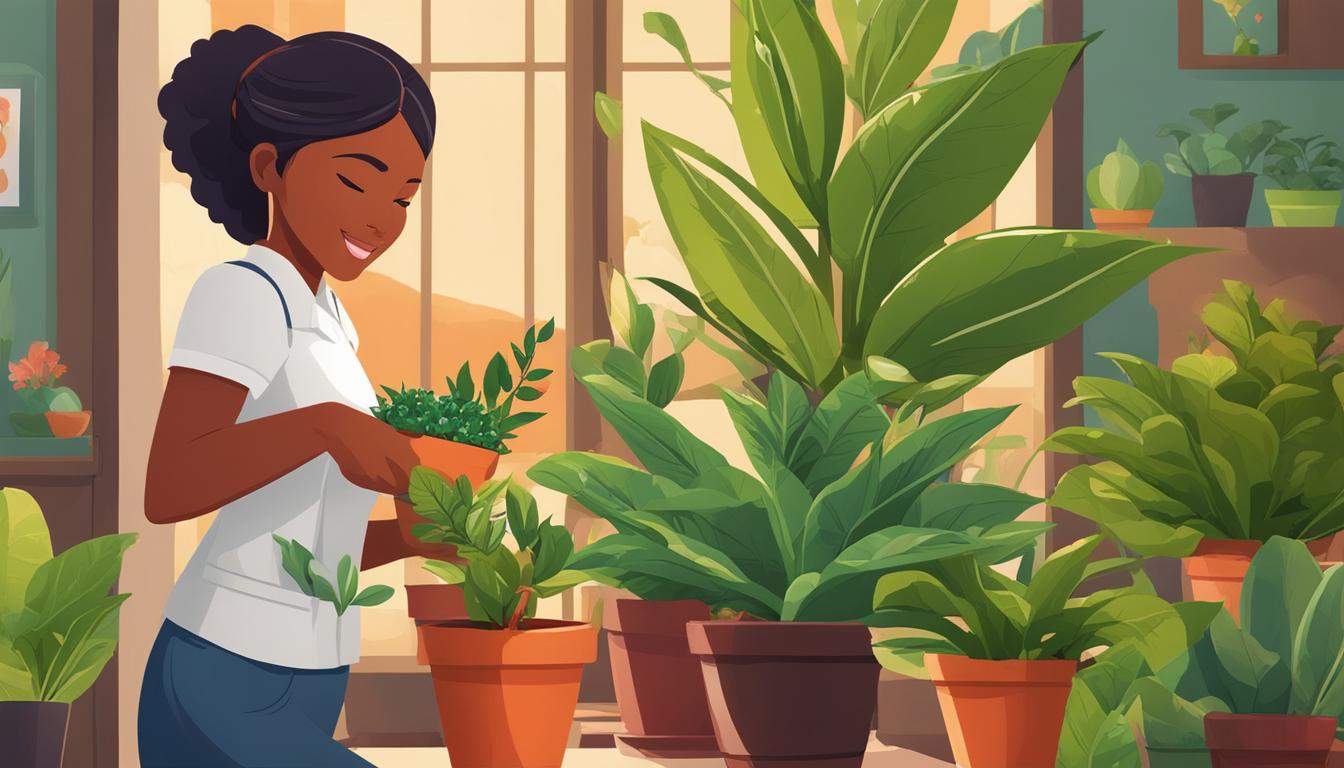
Cleaning and Maintaining Indoor Plants
Keeping your indoor plants clean and well-maintained is essential for their overall health and appearance. Regular cleaning helps remove dust and dirt from the leaves, improving their ability to photosynthesize and respire properly. Additionally, maintaining good plant hygiene can prevent pest infestations and diseases. Here are some tips and techniques to help you keep your indoor plants looking their best:
1. Removing Dust:
Dust can accumulate on the leaves of indoor plants, blocking sunlight and hindering their ability to carry out essential processes. To remove dust, gently wipe the leaves with a soft, damp cloth or sponge. For larger plants or those with hardy leaves, you can also use a handheld showerhead or spray bottle to rinse off the dust. Be sure to support the plant’s stems and avoid using hot or cold water, as extreme temperatures can damage the leaves.
2. Foliage Care:
In addition to removing dust, it’s important to pay attention to the overall health of your plant’s foliage. Regularly inspect the leaves for signs of discoloration, wilting, or pest damage. If you notice any issues, take immediate action by trimming off affected leaves or treating the plant with appropriate pest control methods. It’s also beneficial to occasionally mist the leaves with water to increase humidity and promote healthier growth.
3. Plant Hygiene:
Good plant hygiene involves keeping your indoor plants free from pests, diseases, and debris. Check your plants regularly for any signs of pest infestation, such as webs, sticky residue, or tiny insects. If you detect pests, isolate the affected plant and treat it with natural remedies or appropriate pest control products. Avoid placing plants too close together, as this can create a humid environment that encourages pest and disease development. Lastly, remove any fallen leaves, flowers, or debris from the pot and the plant’s surroundings to maintain a clean and pest-free environment.
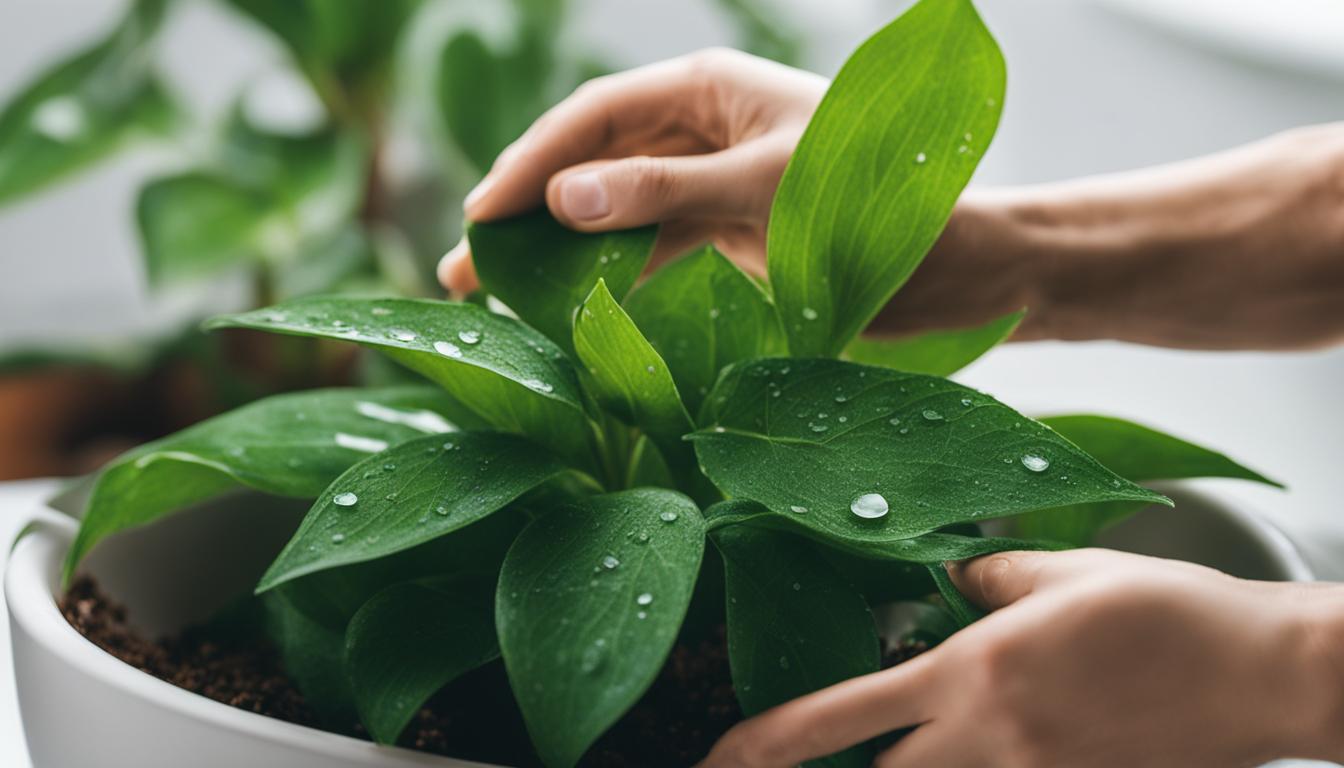
By following these cleaning and maintenance practices, you can ensure that your indoor plants not only look beautiful but also thrive in a healthy environment. Regular cleaning and monitoring will help keep pests and diseases at bay, promoting the overall well-being of your plants.
Dealing with Pest Infestations in Indoor Plants
Indoor plant care requires more than just watering and providing light. Unfortunately, pesky pests can sometimes find their way into our beloved houseplants, causing damage and distress. Identifying and dealing with these pest infestations is crucial to ensure the health and longevity of your indoor plants.
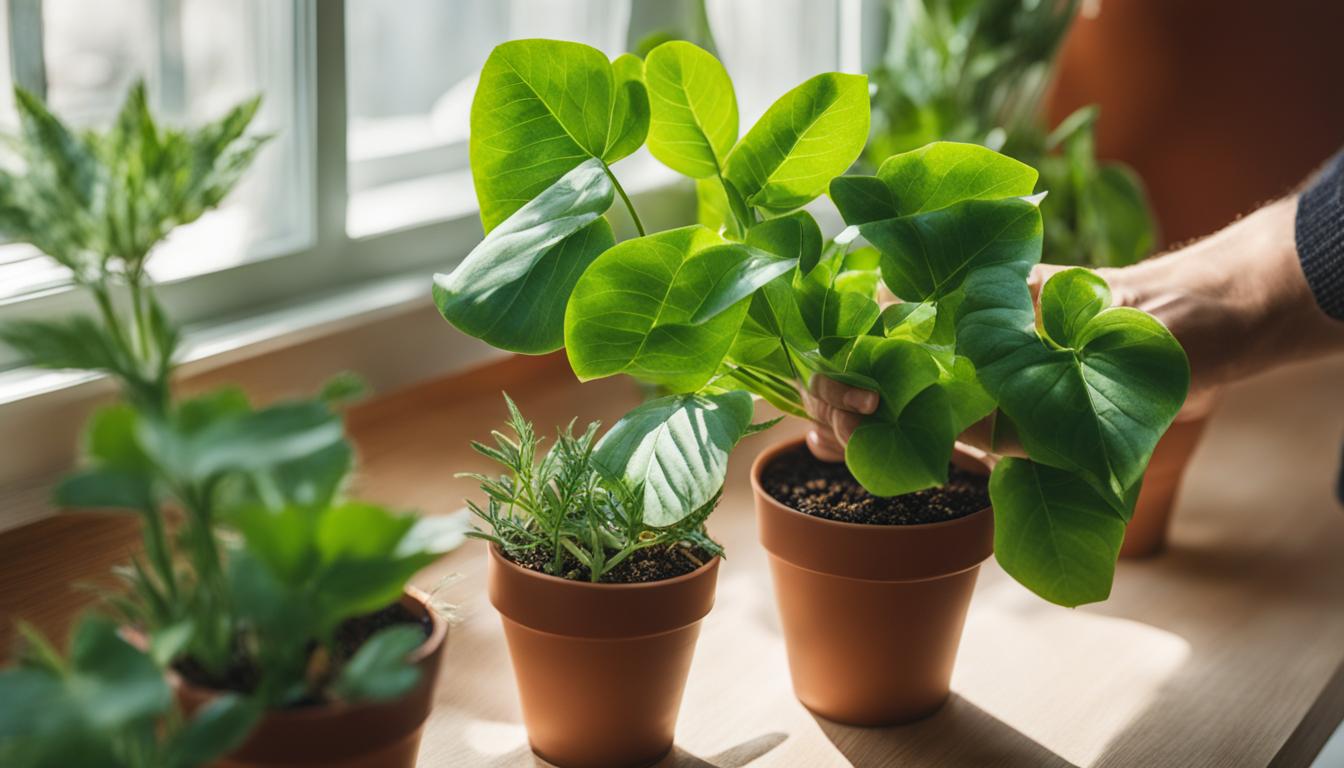
“Pest control is an essential part of indoor plant care. By taking proactive measures and using natural remedies, you can effectively eliminate pests and protect your plants.” – Indoor Gardening Expert
Identifying the specific pests infesting your indoor plants is the first step in addressing the issue. Common pests include spider mites, whiteflies, mealybugs, aphids, scale, and thrips. Each pest may leave behind distinct signs, such as webbing, yellowing leaves, sticky residue, or visible insects. Once identified, you can choose an appropriate method to combat them.
When it comes to pest control, natural remedies are a popular choice among indoor gardeners. These remedies are safe for both your plants and the environment. Some common natural pest control options include homemade sprays using ingredients like neem oil or rubbing alcohol. Regularly inspecting your plants, treating affected areas, and taking preventive measures can help keep your indoor plants pest-free.
Troubleshooting Common Indoor Plant Care Issues
Achieving successful indoor plant care requires proper attention and care. However, even with the best intentions, plant care issues can arise. Don’t fret! We’re here to help you troubleshoot and overcome common problems that may arise along the way. By understanding the underlying causes and taking appropriate action, you can keep your indoor plants healthy and vibrant.
Common Plant Care Mistakes to Avoid
- Overwatering: One of the most common mistakes is giving your plants too much water. This can lead to root rot and other issues. Ensure you are watering your plants according to their specific needs and allowing the soil to dry out slightly between waterings.
- Lack of sunlight: Insufficient light can cause your indoor plants to become weak and leggy. Make sure to place your plants in areas where they can receive adequate, indirect sunlight. Consider using artificial grow lights if natural light is limited.
- Dehydration: On the other hand, underwatering can lead to wilting and stunted growth. Be mindful of your plant’s water needs and adjust your watering routine accordingly.
- Nutrient deficiencies: Indoor plants rely on proper nutrition for healthy growth. Ensure you are providing them with the necessary nutrients through regular fertilization. Be cautious not to over-fertilize, as this can cause harm to your plants.
- Low humidity: Many indoor plants thrive in environments with higher humidity levels. If your home has dry air, consider using a humidifier to create a more suitable environment for your plants.
Resolving Plant Care Problems
As you encounter specific plant care issues, take the following steps to address them:
- Identify the problem: Observe your plant closely and identify any visible symptoms or changes. Look for discoloration, wilting, pest infestations, or any other signs that can help pinpoint the issue.
- Research and diagnose: Use reliable resources to research and diagnose the specific problem affecting your plant. Understanding the cause will guide you in finding the appropriate solution.
- Take appropriate action: Based on your diagnosis, take the necessary steps to address the issue. This may involve adjusting watering habits, providing additional light, treating pests, or adjusting the indoor environment.
- Monitor and adjust: Regularly monitor your plant’s progress after implementing the solutions. If the problem persists or worsens, make further adjustments as needed.
Remember, caring for indoor plants is a continuous learning process. Don’t be discouraged by setbacks, as they provide opportunities for growth and improvement. By troubleshooting common plant care issues and addressing them promptly, you’ll be well on your way to becoming a confident and successful indoor plant parent.
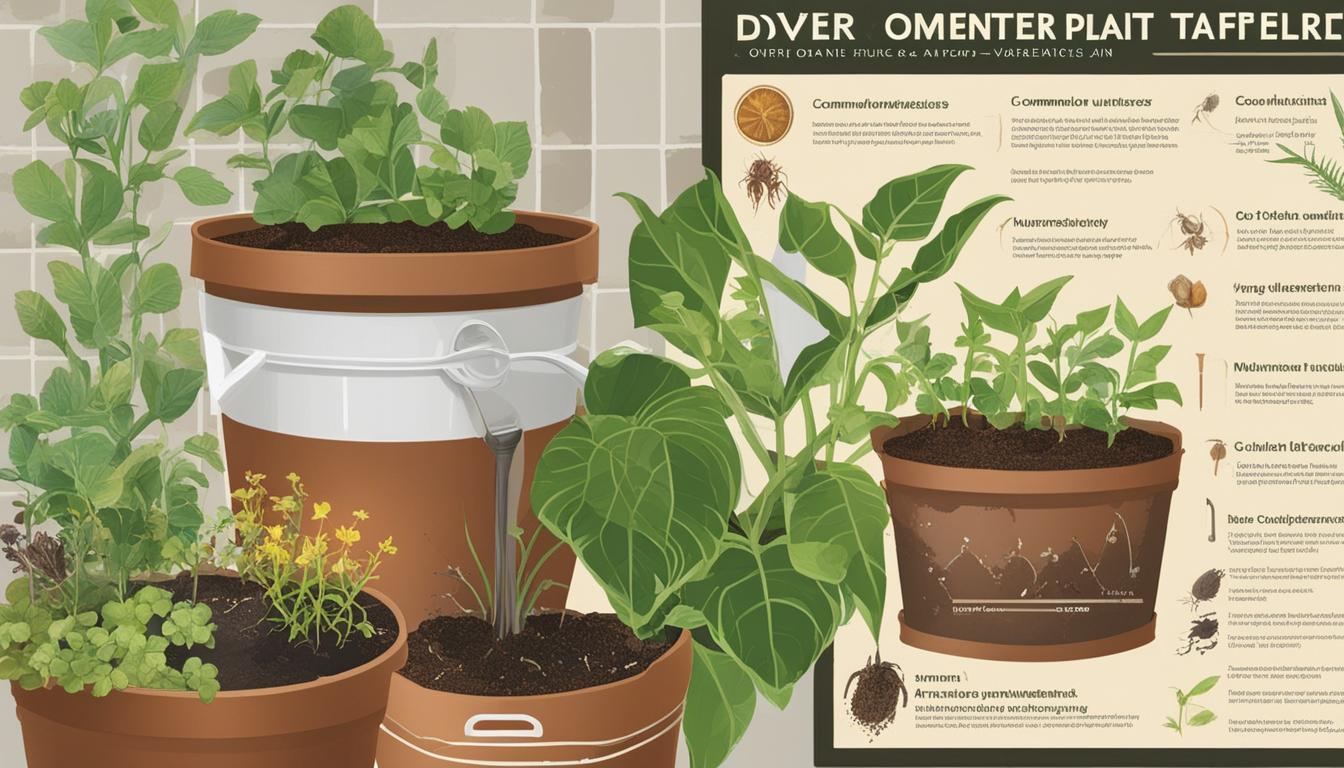
Conclusion
Caring for indoor plants is an essential part of creating a beautiful and thriving indoor garden. By following these plant care tips, you can ensure the long-term health and vitality of your houseplants.
Indoor plant care involves providing the right amount of light, water, and nutrients. Understanding the light needs of your plants and placing them in suitable spots will promote their growth and prevent damage due to excessive sunlight or low light conditions.
Proper watering is crucial for indoor plant maintenance. Finding the right watering frequency and monitoring soil moisture levels will help prevent overwatering or underwatering, ensuring that your plants stay healthy and hydrated.
Regular cleaning and maintenance of your indoor plants will keep them looking their best. Removing dust and dirt from the leaves is important for proper respiration and can help prevent pest infestations. By taking preventive measures and addressing care issues promptly, you can troubleshoot common problems and maintain a thriving indoor garden.
FAQ
What are the essential aspects of indoor plant care?
The essential aspects of indoor plant care include understanding light, water, and air requirements, choosing the right plants for your home, selecting appropriate pots, proper watering and fertilizing, and troubleshooting common care issues.
How important is light exposure for indoor plants?
Light exposure is crucial for the growth and survival of indoor plants. Different plants have varying light requirements, so it’s important to understand the specific needs of your plants and provide them with the appropriate amount of light.
How do I choose the right pots for my indoor plants?
It’s important to choose pots with drainage holes to prevent waterlogging. Consider the size of the pot in relation to the plant’s root system and choose pots that suit the specific needs of your plants.
Why is fertilizing indoor plants important?
Fertilizing provides plants with the necessary nutrients they need to thrive. Choosing the right fertilizer and applying it correctly is essential for the overall health and growth of your indoor plants.
How do I clean and maintain my indoor plants?
Regularly wiping off or spraying the leaves to remove dust and dirt is important for proper plant respiration. This can be done once or twice a year to keep your plants clean and healthy.
How do I deal with pest infestations in my indoor plants?
Regularly inspecting your plants for signs of pests, treating affected areas, and taking preventive measures can help keep your indoor plants pest-free. There are also natural remedies available for controlling and eliminating pests.
What are some common indoor plant care issues and how do I troubleshoot them?
Common care issues include overwatering, lack of sunlight, dehydration, nutrient deficiencies, and low humidity. Understanding the specific needs of your plants and taking appropriate actions can help resolve these issues.

